In the exponentially growing education sector, the convergence of technology and pedagogy has given rise to remote learning as a dominant trend, shaping the future of education. With the technological advancements in this sector, the significance of live streaming classes in facilitating remote learning has become more pronounced than ever.
Live streaming classes offer a dynamic and interactive approach to education, transcending geographical barriers and providing access to a vast pool of knowledge. These platforms are not just tools but essential enablers, fostering engagement, collaboration, and real-time interaction between educators and learners. The ability to seamlessly deliver content, engage in live discussions, and address queries in real-time has become indispensable for educators navigating the virtual realm.
Choosing the right live streaming platform is paramount in ensuring a robust and effective remote learning experience. The top live streaming class platforms for remote learning in 2025 are not merely technological solutions but comprehensive ecosystems that empower educators and learners alike. And in this blog we will walk you through the top live streaming class platforms, their key features, highlights, strategies, and more. So, let’s get started!
Why are Live Streaming Classes Crucial?
Live streaming classes have emerged as a crucial and transformative tool, redefining the way knowledge is disseminated and acquired. This shift is not merely a technological evolution; it represents a paradigmatic change in the dynamics of teaching and learning. Several factors contribute to the growing significance of live streaming classes, making them indispensable in the education sector.
1. Real-Time Interaction
One of the primary reasons live streaming classes are deemed crucial is the facilitation of real-time interaction between educators and learners. Unlike traditional methods of content delivery, live streaming allows instantaneous communication, breaking down the physical barriers that once limited educational access.
Through live sessions, educators can dynamically engage with their audience, gauging reactions, adapting content based on immediate feedback, and fostering an environment akin to a traditional classroom.
Real-time interaction extends beyond the teacher-student relationship. Peer-to-peer engagement is also enhanced, creating a virtual learning community where students can collaborate, share insights, and collectively navigate the educational journey. This immediacy in interaction brings a sense of presence and connectivity, which is particularly vital in remote learning environments where physical proximity is absent.
2. Engaging Educational Experience
Live streaming classes provide an engaging and immersive educational experience that transcends the limitations of static content. The incorporation of multimedia elements, live demonstrations, and interactive tools enrich the learning environment, catering to diverse learning styles. Educators can leverage visual aids, conduct live experiments, and share real-world examples, making the learning process dynamic and compelling.
Moreover, the live nature of these classes introduces an element of excitement and anticipation. Students are not passive recipients but active participants in a shared learning experience. This engagement is further heightened by features such as live polls, quizzes, and collaborative projects that transform the learning journey into an interactive and participatory endeavor.
In addition to the content delivery, the flexibility of live streaming classes accommodates various learning paces. Students can revisit live sessions through recordings, ensuring that the educational material is accessible at their convenience. This flexibility caters to the diverse needs of learners, accommodating different schedules and time zones, making education more inclusive and accessible.
3. Instant Q&A Opportunities
Live streaming for education provide a unique advantage in terms of instant question-and-answer (Q&A) opportunities. Traditional classrooms often limit the time available for questions, and students may hesitate to interrupt the flow of a lecture. In contrast, online learning platforms offer dedicated segments or chat functionalities where students can pose questions in real-time.
This immediacy in Q&A fosters a dynamic exchange between educators and learners. Students can seek clarification on concepts, discuss uncertainties, and engage in meaningful dialogues with their instructors. The ability to address queries in real-time enhances comprehension, ensuring that students grasp the content as it unfolds. This interactive element is particularly valuable in complex subjects where clarifications and additional explanations may be crucial for a comprehensive understanding.
Moreover, the collective nature of the Q&A sessions allows students to benefit from the questions posed by their peers, broadening the scope of discussions and addressing a range of perspectives. The collaborative nature of live streaming Q&A sessions contributes to a rich and diverse learning environment.
4. Dynamic Visual Learning
The integration of dynamic visual learning has emerged as a powerful catalyst for enhanced comprehension and retention in education. Traditional teaching methods often rely heavily on textual information, leaving learners grappling with abstract concepts. The advent of dynamic visual learning leverages the strength of visual stimuli, transforming educational content into a vibrant, interactive, and engaging experience.
Dynamic visual learning incorporates multimedia elements such as images, videos, infographics, and interactive simulations. These visual aids serve as potent tools for simplifying complex concepts, making abstract ideas tangible, and catering to diverse learning styles. For instance, a science lesson can come alive through animated depictions of molecular structures, historical events can be reenacted through immersive videos, and mathematical principles can be demonstrated through interactive simulations.
The impact of dynamic visual learning is profound, as it transcends the limitations of traditional static methods. Visual content not only captures attention but also enhances understanding by providing a spatial and contextual framework for information. This approach is particularly beneficial in subjects where visualization is key, such as the sciences or geography, fostering a deeper and more intuitive grasp of the material.
5. Flexible Learning Environment
The concept of a flexible learning environment has become synonymous with the evolving landscape of education, acknowledging that one size does not fit all in the realm of learning. A flexible learning environment prioritizes adaptability, catering to the diverse needs, preferences, and circumstances of individual learners.
The flexibility extends across various dimensions, including time, location, and pacing. Asynchronous learning, where students access educational content at their own pace, allows for personalized schedules, accommodating varied commitments and time zones. This flexibility is especially crucial in the context of remote learning, where students may be balancing academic pursuits with work, family responsibilities, or other obligations.
Moreover, a flexible learning environment embraces a variety of instructional formats. Blended learning, combining in-person and online components, provides a balanced approach, while fully online courses offer the convenience of accessing education from any location with an internet connection. This adaptability caters to different learning preferences, ensuring that students can choose the mode that best suits their individual needs.
6. Personalized Tutor Support
While the digital era has ushered in an era of self-directed learning, the role of personalized tutor support remains pivotal in facilitating academic success. Personalized tutor support goes beyond conventional classroom interactions, providing individualized guidance, feedback, and mentorship to students based on their unique needs and challenges.
In a personalized learning environment, tutors serve as mentors, facilitators, and guides, offering tailored assistance to help students navigate complex subjects or overcome learning hurdles. This one-on-one interaction allows for a deeper understanding of each student’s strengths, weaknesses, and learning preferences, enabling english tutors online to customize their approach to maximize the student’s academic potential.
The use of technology further enhances personalized tutor support, as tutors can leverage data analytics and insights from online platforms to track student progress and adapt their guidance accordingly. This data-driven approach ensures that interventions are timely and targeted, addressing specific areas of difficulty and reinforcing areas of strength.
7. Immediate Feedback Loop
The incorporation of an immediate feedback loop into the educational process has revolutionized the way students engage with and absorb information. Traditionally, students would submit assignments, assessments, or questions and await feedback, often with a considerable delay. The advent of technology has allowed for a real-time feedback mechanism, creating a dynamic and responsive learning environment.
Immediate feedback is instrumental in enhancing the learning process by providing timely insights into student performance. Whether it’s through automated quizzes, instant assessments, or interactive platforms, students receive immediate information on their understanding of concepts. This rapid feedback loop not only reinforces correct answers but also addresses misconceptions promptly, preventing the solidification of errors and fostering a deeper understanding of the subject matter.
8. Collaborative Learning Atmosphere
A collaborative learning atmosphere represents a departure from traditional, isolated learning models, emphasizing interaction, shared knowledge, and collective problem-solving. In such an environment, students actively engage with each other, fostering a community of learners where knowledge is not only transmitted by the teacher but co-constructed through collaboration.
Technology plays a pivotal role in enabling collaborative learning, offering platforms for virtual group discussions, project collaborations, and shared document editing. Collaborative tools provide students with the opportunity to learn from their peers, share diverse perspectives, and collectively tackle complex problems. This interaction not only enhances understanding but also nurtures critical thinking, communication skills, and teamwork—essential attributes in today’s interconnected world.
9. Enhanced Student Participation
The concept of enhanced student participation goes beyond mere attendance or completion of assignments. It embodies active engagement, interaction, and a sense of ownership in the learning process. Technology has played a transformative role in amplifying student participation by providing diverse avenues for expression, communication, and contribution.
Interactive platforms, online discussions, and multimedia-rich content captivate students’ attention, making the learning experience more engaging and participatory. Polls, quizzes, and interactive elements within lessons encourage students to actively respond, ensuring a more dynamic and responsive classroom environment. The ability to express opinions, ask questions, and contribute to discussions empowers students, fostering a sense of agency in their own education.
The Best Live Streaming Class Platforms: in 2025 and Beyond
1. Muvi Live
Muvi Live, a live streaming platform designed for scale, offers a seamless solution for remote learning through its Live Streaming Platform Provider. With the ability to launch and run 24/7 live streams instantly from cameras or feeds, Muvi Live ensures a robust and reliable platform for educational institutions.
Expanding beyond traditional classrooms, Muvi Live facilitates live classes, interactive video sessions, podcast coaching, and more, enabling institutions to grow engagement, enrollment, and revenue. The platform’s features, including DRM protection, DVR functionality, live chat, and video cards, contribute to a comprehensive and interactive learning experience.
Muvi Live’s straightforward implementation process allows educators to go live in minutes. By setting up the encoder, choosing input and output parameters, and initiating the stream, teachers can seamlessly conduct online classes. The ultra-low latency live streaming feature enables embedding live classes directly into websites or apps, facilitating immediate and accessible learning for students. With Muvi Live, institutions can effortlessly adapt to the demands of remote education, ensuring a streamlined and effective online learning environment.
Key Features and Advantages:
- Muvi Live allows users to initiate live classes effortlessly with its easy setup feature.
- It enables users to access live classes on the go through its dedicated mobile app.
- Users can seamlessly integrate Muvi Live into existing platforms using its versatile APIs and SDKs.
- Muvi Live empowers users to foster engagement through interactive video sessions for dynamic learning experiences.
- It ensures a lag-free global streaming experience with its built-in powerful Content Delivery Network (CDN).
- Users can facilitate real-time communication during streaming events by embedding live chat with Muvi Live.
- Muvi Live enables users to optimize live streams for smooth delivery through its encoding and transcoding capabilities, ensuring an enhanced learning experience.
2. Vimeo
Vimeo presents a comprehensive solution for remote learning through its live streaming capabilities, simplifying the process for virtual events, webinars, interactive classes, and live broadcasts. With a focus on smooth streaming, Vimeo instills confidence in users to deliver seamless and professional live experiences regardless of their expertise.
The platform’s commitment to simplified production ensures that live streams achieve a polished and professional appearance. This ease of use is designed to accommodate users with varying levels of technical proficiency, making it accessible for educators and institutions seeking a reliable live streaming solution.
The ability to embed the live player anywhere online and repurpose recordings as evergreen content enhances the accessibility and longevity of educational material, making Vimeo a robust solution for remote learning in diverse educational settings.
Key Features and Advantages:
- Vimeo Record empowers users to create engaging lessons and lectures by recording screens, webcams, or both, delivering knowledge with a personalized touch.
- With Vimeo, users can effortlessly centralize video content, securely storing, managing, and hosting high-quality video lectures and live streams in an easily searchable library.
- It provides flexibility for hosting classes, allowing users to embed players on their sites and set viewing permissions based on public or private settings.
- Ensuring security, Vimeo offers password protection for videos and live streams, allowing users to make content exclusive to specific networks, enhancing control over access.
- Vimeo simplifies content updates by enabling users to replace videos without changing URLs, ensuring seamless integration and uninterrupted access for students and audiences.
3. Kaltura
Kaltura emerges as a pivotal solution for remote learning, offering a comprehensive video platform that seamlessly integrates synchronous and asynchronous learning experiences. Kaltura’s strength lies in its holistic approach, combining essential features such as Learning Management System (LMS) video integration, lecture capture, virtual classrooms, and a Video Portal. This amalgamation ensures effortless content management, enrichment, and distribution, providing educators and institutions with a unified platform for diverse educational needs.
Incorporating Kaltura into the educational journey unleashes a world of possibilities, fostering discovery and collaboration. The platform’s commitment to both synchronous and asynchronous learning underscores its versatility, enabling educators to tailor their approach to varied learning styles and preferences.
Key Features and Advantages:
- Kaltura’s Virtual Classroom delivers a tailored experience for educators and learners, offering advanced features like student engagement analytics, whiteboard, screen sharing, content management playlist, breakout rooms, live quizzing, native experience video, HD video sharing, and pause/play power.
- Educators using Kaltura can seamlessly live stream and record high-quality videos, providing students with flexible learning opportunities and on-demand access for comprehensive review.
- Kaltura Video Portal simplifies content generation, streamlines workflows, and acts as a branded hub for content creation, management, and distribution. It features customization options, insightful analytics, in-video keyword search, multilingual subtitles, engagement tools, and top-level security.
- In Kaltura’s Virtual Classroom, educators and learners benefit from a platform specifically tailored to their needs, distinguishing it from generic video communication platforms.
4. Dacast
Dacast offers a robust solution for remote learning through its Live Streaming Platform, empowering businesses to engage their audience effectively with innovative streaming solutions. With a focus on professional broadcasting experiences, users can harness transcoding, monetization, security, and content management features to deliver dynamic live streaming video content for educational purposes.
Dacast’s Online Video Hosting capabilities provide a secure foundation for organizing and managing videos seamlessly. Users can leverage the platform to live stream unlimited channels of video content directly on their web pages. The emphasis on private video hosting ensures users retain control over their content, allowing for tailored accessibility and permissions to meet specific educational needs.
Key Features and Advantages:
- Dacast facilitates the creation of learning platforms by seamlessly integrating live and on-demand video content, enhancing the educational experience.
- With Dacast, educators can reach students both near and far through online video streaming, making education accessible beyond the physical classroom.
- It serves a range of educational institutions, including grade schools, colleges, universities, and trade schools, providing tools to make education more accessible and effective.
- Dacast stands out as a unified streaming platform equipped with essential tools, ensuring a cohesive and comprehensive solution for educators.
- Educators can leverage Dacast to broadcast live lessons and training sessions in real-time, with the added benefit of recording the live stream for later playback, enhancing flexibility and accessibility in remote learning.
5. VPlayed
VPlayed presents a tailored solution for remote learning through its robust Live Streaming Platform, designed to empower businesses, educators, and institutions to extend their live videos globally. The platform caters to a diverse range of applications, including live webinars, online sermons, concerts, and more, ensuring a versatile and powerful tool for various industries.
At the core of VPlayed’s offering is a self-hosted live-streaming platform, curated with hand-selected features that are meticulously aligned with the unique requirements of users. This self-hosted approach provides users with a dedicated space to conduct live classes, fostering an environment where educators have control over the content delivery and interaction with students.
Key Features and Advantages:
- VPlayed empowers users to build a custom-built online video education platform, offering the capability to host, manage, and distribute educational streaming content seamlessly across web, mobile, and smart TV platforms.
- With VPlayed, users can create a personalized online education platform tailored to their preferences, utilizing the platform’s art of customization with key elements, ensuring a unique and user-friendly learning environment.
- VPlayed facilitates the enhancement of knowledge transfer by allowing third-party providers to introduce collaborative tools, fostering interactive and engaging learning experiences for students.
- One can expand the reach of educational content with VPlayed’s offline viewing feature, enabling users to deliver access to courses even when offline. This functionality ensures flexibility and accessibility for a broader audience.
How To Improve Your Live Streaming Classes?
1. Enhance Visual Content
Visual content plays a pivotal role in capturing and maintaining the attention of remote learners. To improve live streaming classes, you should prioritize enhancing the visual elements of your content. This involves creating visually appealing presentations, incorporating multimedia elements, and leveraging interactive visuals.
Tips for Enhancing Visual Content
- Dynamic Presentations: Utilize dynamic and visually engaging presentations that include images, infographics, and charts. This helps break the monotony of a static screen and keeps learners actively engaged.
- Interactive Whiteboards: Platforms that support interactive whiteboards can add a layer of engagement. Educators can illustrate concepts, solve problems, or annotate content in real-time, providing a more dynamic learning experience.
- Screen Sharing: Seamlessly integrate relevant visual aids by leveraging screen-sharing capabilities. Whether showcasing a document, a website, or a software application, screen sharing enhances the clarity of information.
- Use of Multimedia: Integrate videos, animations, and other multimedia elements to complement verbal explanations. Visual variety contributes to a more immersive and comprehensive learning environment.
2. Gamify Q&A Sessions
Traditional question-and-answer sessions can be transformed into engaging and interactive experiences through gamification. Gamifying Q&A sessions not only fosters student participation but also makes the learning process enjoyable and memorable.
Tips for Gamifying Q&A Sessions
- Quiz-Style Challenges: Turn Q&A sessions into quiz-style challenges where students can earn points for correct answers. This not only encourages active participation but also adds an element of competition.
- Interactive Polls: Use interactive polls to gauge student understanding and opinions. Polls can serve as quick knowledge checks and provide valuable insights into areas that may need further clarification.
- Reward Systems: Implement a reward system for active participation. This can include virtual badges, certificates, or other recognitions that motivate students to engage in Q&A sessions.
- Collaborative Challenges: Foster collaboration by introducing challenges that require group participation. This not only promotes teamwork but also creates a sense of community among learners.
3. Optimize Audio Quality
Audio quality is a crucial aspect of live streaming classes, as clear and crisp audio ensures that learners can follow the content without distractions. Poor audio can lead to disengagement and frustration among students.
Tips for Optimizing Audio Quality
- Use Quality Microphones: Invest in high-quality microphones to ensure clear and audible communication. External microphones, especially those with noise-canceling features, can significantly enhance audio quality.
- Check Internet Connection: A stable internet connection is essential for consistent audio quality. Educators and students alike should ensure they have a reliable and high-speed internet connection to prevent audio lag or disruptions.
- Encourage Noise-Free Environments: Encourage participants to join classes from quiet environments. Background noise can interfere with audio clarity, so minimizing distractions ensures a more focused learning experience.
- Conduct Audio Tests: Before live streaming classes, conduct audio tests to identify and address any potential issues. This proactive approach allows educators to troubleshoot problems and ensure optimal audio quality during the session.
4. Encourage Student Engagement
Student engagement is imperative for effective teaching, and in the context of live streaming classes, fostering active participation is crucial for a successful learning experience. Here are strategies to encourage student engagement in virtual classrooms:
Strategies to Encourage Student Engagement
- Interactive Q&A Sessions: Encourage students to ask questions and actively participate in question-and-answer sessions. Create an open and welcoming environment where students feel comfortable expressing their thoughts and seeking clarification.
- Polls and Surveys: Integrate interactive polls and surveys into your live streaming classes. This not only gauges student understanding but also provides real-time feedback, allowing educators to adapt their teaching approach based on the responses.
- Group Discussions: Foster collaboration through virtual group discussions. Break students into smaller groups for brainstorming sessions, case studies, or collaborative problem-solving activities. This promotes peer-to-peer learning and keeps students actively engaged.
- Interactive Whiteboards: Platforms that support interactive whiteboards can be utilized for engaging activities. Educators can draw diagrams, annotate content, and involve students in real-time visual interactions, making the learning experience more dynamic.
- Gamified Elements: Incorporate gamified elements into the learning process. This can include quiz-style challenges, virtual badges for achievements, or other reward systems that incentivize active participation.
- Real-world Applications: Relate course content to real-world applications. Connect theoretical concepts to practical scenarios, demonstrating the relevance of the material and keeping students engaged by showing its real-world impact.
- Virtual Field Trips: Leverage technology to take students on virtual field trips or simulations. This provides a change of pace, offering a more immersive and engaging experience that goes beyond traditional classroom settings.
5. Utilize Breakout Activities
Breakout activities are a valuable strategy to create a more interactive and dynamic virtual learning environment. Breaking students into smaller groups for focused activities can enhance collaboration, critical thinking, and overall engagement.
Effective Use of Breakout Activities
- Group Assignments: Assign specific tasks or projects to small groups during breakout sessions. This encourages teamwork, problem-solving, and peer-to-peer interaction.
- Case Studies: Present case studies for analysis within breakout groups. Students can collaboratively discuss and apply theoretical knowledge to real-world scenarios, fostering a deeper understanding of the subject matter.
- Role-playing Exercises: Engage students in role-playing exercises related to course content. This not only makes the material more relatable but also encourages creativity and active participation.
- Problem-solving Challenges: Pose challenges or problem-solving activities that require collaborative efforts. Breakout groups can work together to find solutions, encouraging critical thinking and teamwork.
- Peer Review Sessions: Incorporate peer review sessions within breakout activities. Students can review and provide constructive feedback on each other’s work, promoting a sense of community and shared learning.
6. Evaluate Technical Setup
Ensuring a smooth technical setup is essential for the success of live streaming classes. Technical issues can disrupt the learning experience and hinder student engagement. Here are considerations to evaluate and optimize the technical setup:
Considerations for Evaluating Technical Setup
- Internet Connection: Both educators and students should have a reliable and high-speed internet connection to avoid disruptions during live streaming classes. Conducting internet speed tests and troubleshooting connectivity issues proactively can prevent potential disruptions.
- Audio and Video Quality: Invest in quality audio equipment, such as external microphones, to ensure clear communication. Additionally, check and optimize video quality to create a professional and engaging visual experience.
- Platform Familiarity: Ensure that both educators and students are familiar with the chosen private live streaming platform. Providing guidelines or training sessions on platform features, settings, and troubleshooting common issues can enhance overall proficiency.
- Backup Plans: Have contingency plans in place for technical issues. Educators should be prepared to switch to alternative platforms or modes of communication in case of unexpected disruptions. Providing students with backup instructions ensures a seamless transition.
- Technical Support: Establish a system for technical support during live streaming classes. Whether through dedicated support staff or clear communication channels for issue reporting, having a responsive technical support mechanism can quickly address and resolve technical challenges.
- Recording Options: Enable recording options for live streaming classes. This allows students to revisit sessions for review and ensures that those who may have encountered technical issues during the live session can still access the content.
7. Diversify Teaching Methods
Diversifying teaching methods is a key strategy to cater to diverse learning styles, keeping students engaged and establishing a deeper understanding of the material. By incorporating various instructional approaches, educators create a dynamic learning environment that resonates with different preferences and strengths.
Strategies for Diversifying Teaching Methods
- Lecture Variations: Instead of relying solely on traditional lectures, integrate diverse formats such as flipped classrooms, guest speakers, or multimedia presentations. This approach caters to auditory and visual learners, enhancing overall comprehension.
- Hands-On Activities: Incorporate hands-on activities that encourage kinesthetic learning. This could include experiments, simulations, or interactive demonstrations that provide a tangible understanding of theoretical concepts.
- Case Studies: Use real-world case studies to apply theoretical knowledge. Analyzing practical scenarios not only deepens understanding but also connects academic concepts to their real-world applications.
- Role-Playing: Implement role-playing exercises where students take on different roles related to course content. This not only enhances creativity but also allows students to approach topics from diverse perspectives.
- Collaborative Projects: Assign collaborative projects that require teamwork and diverse skill sets. This not only promotes collaboration but also exposes students to different ways of thinking and problem-solving.
- Technology Integration: Incorporate educational technologies such as virtual reality, simulations, or online interactive modules. This appeals to tech-savvy students and introduces innovative learning experiences.
8. Facilitate Group Discussions
Group discussions are an effective means of promoting active learning, critical thinking, and collaboration among students. Through facilitated discussions, educators create a participatory environment where students can share ideas, ask questions, and deepen their understanding through peer interaction.
Strategies for Facilitating Group Discussions
- Clearly Defined Objectives: Set clear objectives for group discussions, outlining the specific topics or questions for exploration. This ensures that discussions remain focused and contribute to the learning goals.
- Assigned Roles: Assign specific roles to students within discussion groups, such as a facilitator, timekeeper, note-taker, or devil’s advocate. This promotes accountability and ensures that discussions are well-organized.
- Structured Format: Implement a structured format for discussions, allowing time for initial thoughts, group collaboration, and summarization. A well-organized format prevents discussions from becoming chaotic and ensures productive outcomes.
- Incorporate Diverse Perspectives: Encourage participants to bring diverse perspectives to the discussion. This diversity of thought enriches the conversation and exposes students to a range of viewpoints, fostering critical thinking.
- Active Facilitation: Actively facilitate the discussion by asking open-ended questions, encouraging participation, and guiding the conversation when necessary. Effective facilitation ensures that discussions remain on track and relevant to the learning objectives.
- Reflective Closure: Conclude group discussions with a reflective closure, allowing students to summarize key takeaways, share insights, and ask any remaining questions. This reinforces learning and ensures that the discussion has a meaningful impact.
9. Utilize Whiteboard Features
Leveraging whiteboard features in virtual classrooms enhances the interactive and visual elements of teaching, providing educators with a powerful tool for dynamic content delivery. Here’s how educators can effectively utilize whiteboard features to elevate the learning experience:
Strategies for Utilizing Whiteboard Features
- Visual Explanations: Use the whiteboard for visual explanations of complex concepts. Illustrate diagrams, charts, and mind maps in real-time to enhance understanding and engage visual learners effectively.
- Interactive Problem Solving: Engage students in interactive problem-solving activities. Solve mathematical equations, conduct science experiments, or annotate textual content on the whiteboard to make abstract concepts more tangible.
- Real-time Annotations: Annotate directly on the whiteboard during live sessions. This allows educators to highlight key points, emphasize important information, and respond to student questions in real-time, creating a more interactive and dynamic teaching environment.
- Concept Mapping: Create concept maps to visually connect ideas and demonstrate relationships between different topics. Concept mapping on the whiteboard aids in organizing information and facilitating a clearer understanding of the subject matter.
- Collaborative Brainstorming: Facilitate collaborative brainstorming sessions using the whiteboard. Encourage students to contribute ideas, and visually map out collective thoughts, fostering a sense of shared learning and creativity.
- Step-by-Step Demonstrations: Use the whiteboard for step-by-step demonstrations. Whether explaining a process or solving a problem, breaking down complex tasks into manageable steps on the whiteboard provides clarity and enhances comprehension.
10. Analyze and Improve
Continuous analysis and improvement are essential components of effective teaching in a virtual setting. Educators should regularly assess the success of their teaching methods, gather feedback from students, and proactively seek opportunities for enhancement. Here’s how educators can implement an ongoing cycle of analysis and improvement:
Strategies for Analyzing and Improving Teaching Methods
- Collect Feedback: Actively seek feedback from students regarding the virtual learning experience. Use surveys, polls, or open discussions to gather insights into what is working well and areas that may need improvement.
- Evaluate Student Performance: Analyze student performance on assessments, assignments, or projects. Identify patterns or trends that may indicate challenges in understanding certain concepts, allowing for targeted adjustments in teaching methods.
- Reflect on Sessions: Engage in self-reflection after each live session. Consider aspects such as pacing, clarity of explanations, and student engagement. Identifying strengths and areas for improvement enhances teaching effectiveness.
- Assess Technology Usage: Evaluate the effectiveness of the chosen technology platforms and tools. Ensure that these tools align with teaching objectives and provide a seamless learning experience for students.
- Adapt to Student Needs: Be responsive to the evolving needs of students. If a particular teaching method is consistently challenging for students, be willing to adapt and explore alternative approaches to address their learning preferences.
- Professional Development: Engage in ongoing professional development to stay informed about emerging trends, teaching methodologies, and technological advancements in remote education. Continuous learning equips educators with new tools and strategies.
- Benchmark Against Goals: Regularly assess progress against predetermined teaching goals. Whether related to student engagement, knowledge acquisition, or skill development, benchmarking helps gauge success and identify areas for refinement.
The Bottom Line
No doubt that the future of education undeniably lies in remote learning, a transformative learning solution that extends across diverse domains. The amalgamation of innovative teaching methods, interactive tools, and continuous improvement strategies reshapes the educational landscape, providing flexibility, accessibility, and enhanced engagement for learners worldwide. As the demand for remote education intensifies, choosing the right platform becomes imperative for educators and institutions aiming to deliver top-notch solutions to their end-users.
Amidst the myriad of options, Muvi Live stands out as the epitome of a comprehensive solution for remote learning. With its user-friendly interface, ultra-low latency live streaming, and diverse features like interactive video meetings, chat, and robust API integration, Muvi Live empowers educators to seamlessly transition into digital learning.
Muvi Live’s commitment to scalability, security, and customization makes it the ideal choice for those venturing into remote education, ensuring a dynamic, engaging, and technologically advanced learning experience for both educators and students. Intrigued to try it out? Then start for free today! If you like it, we will set it up for you!

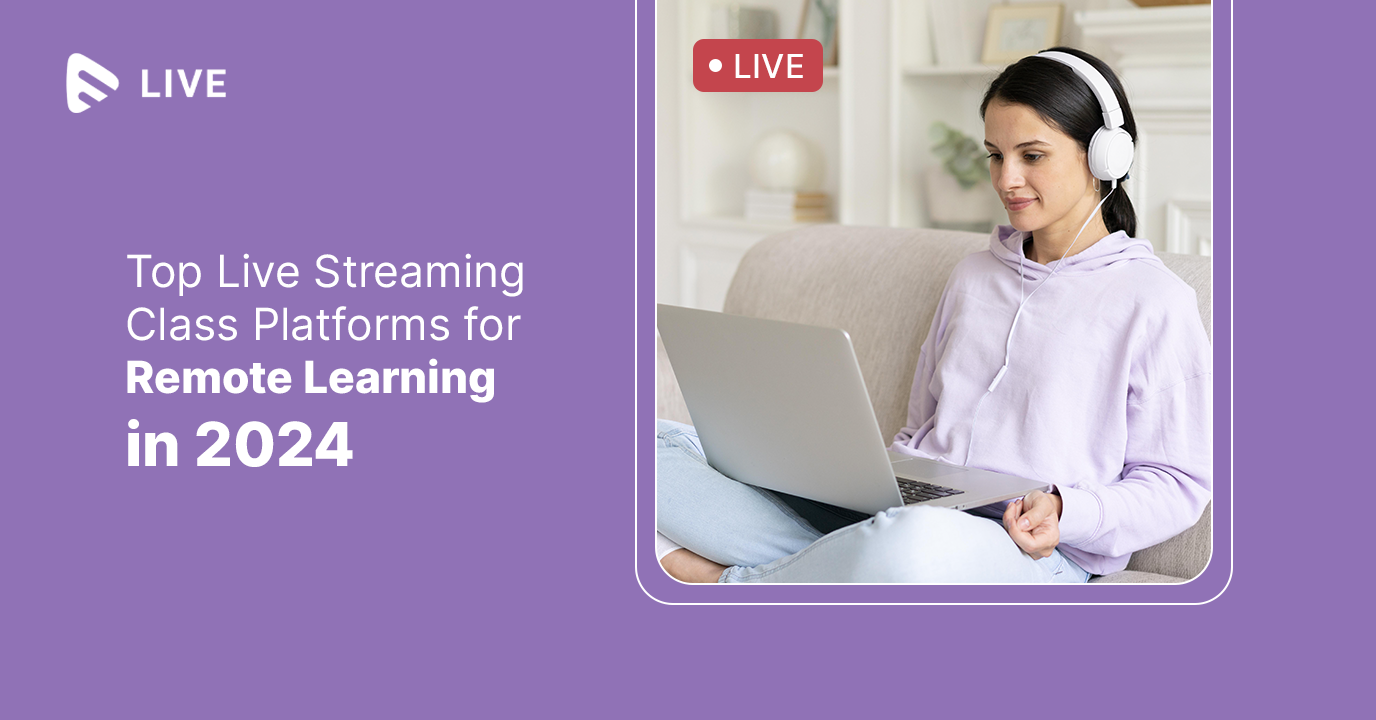


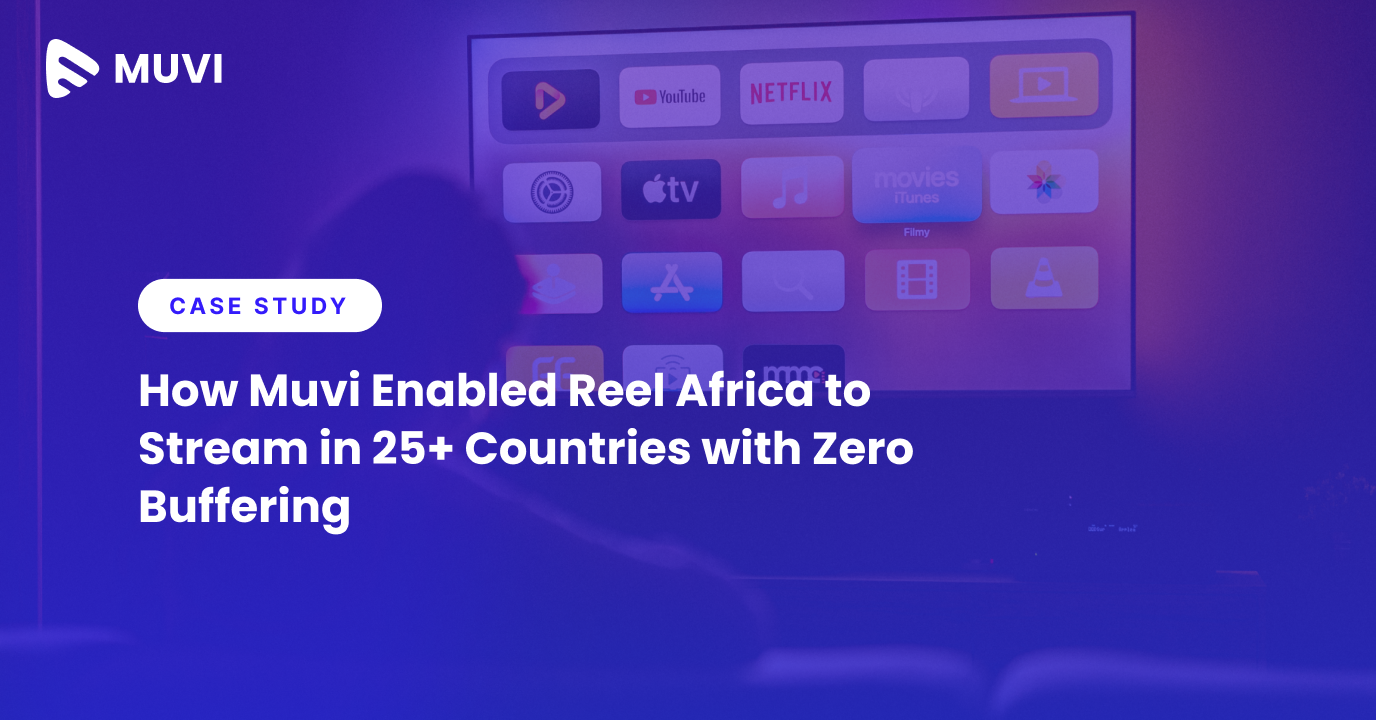

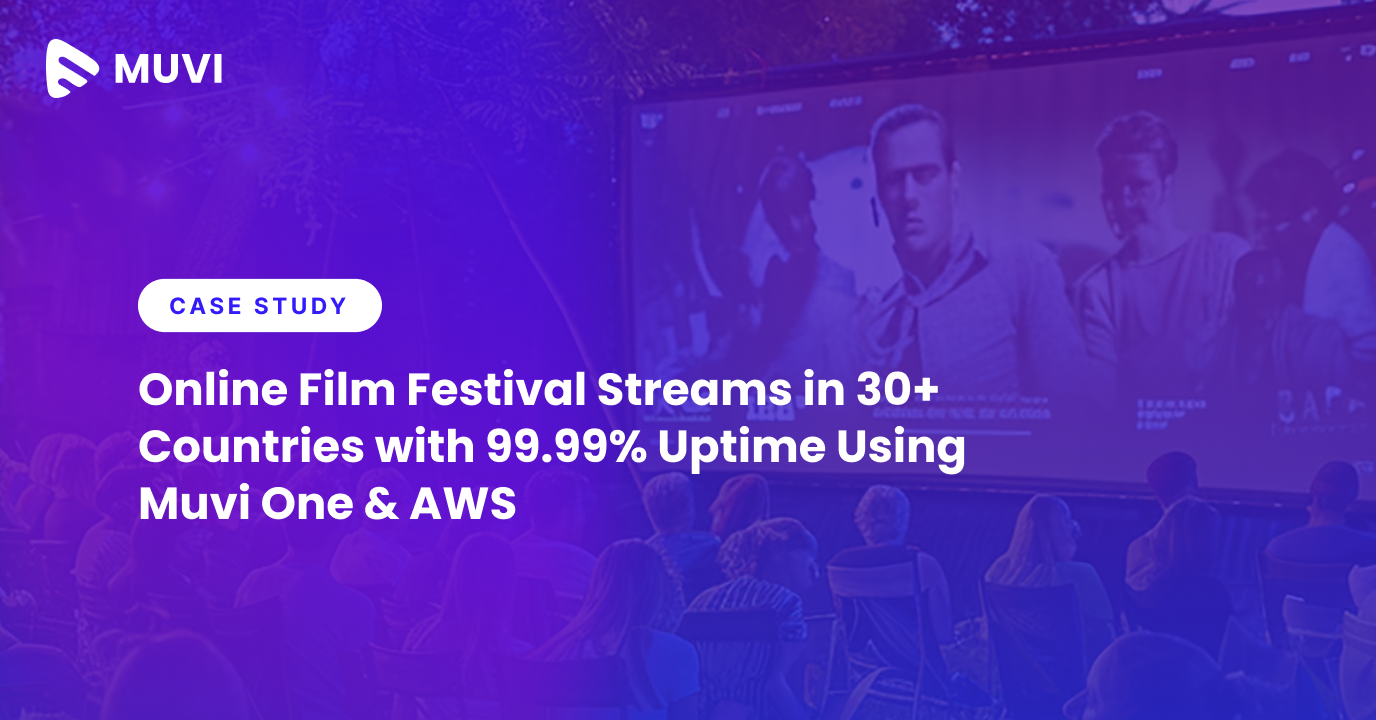
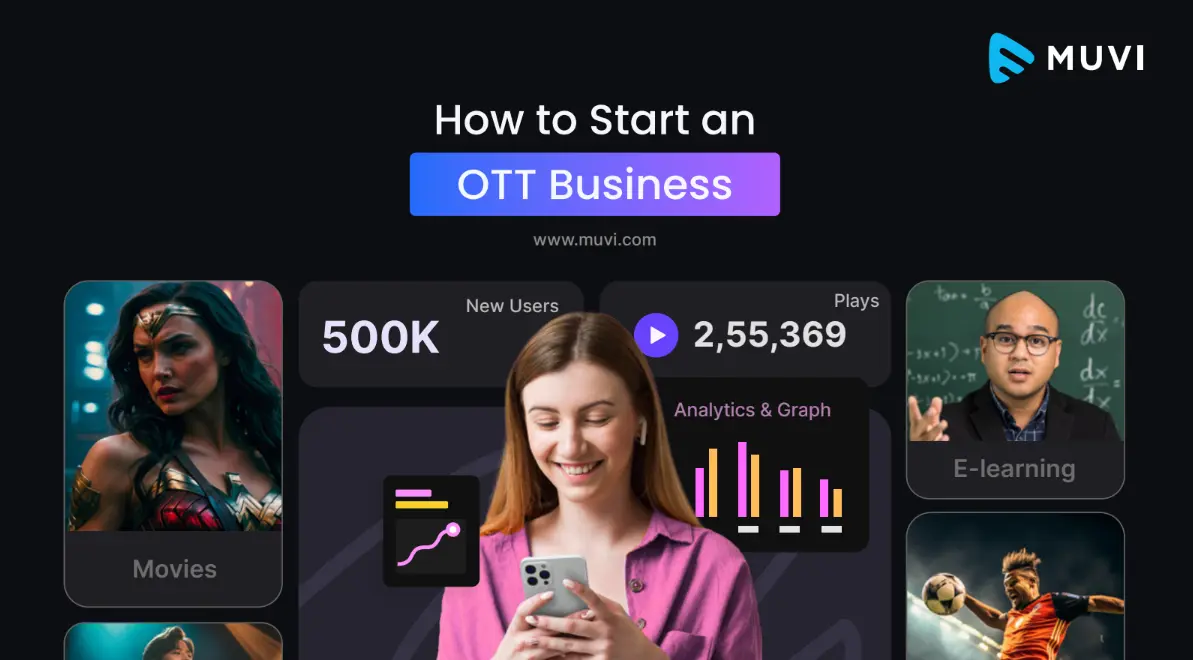
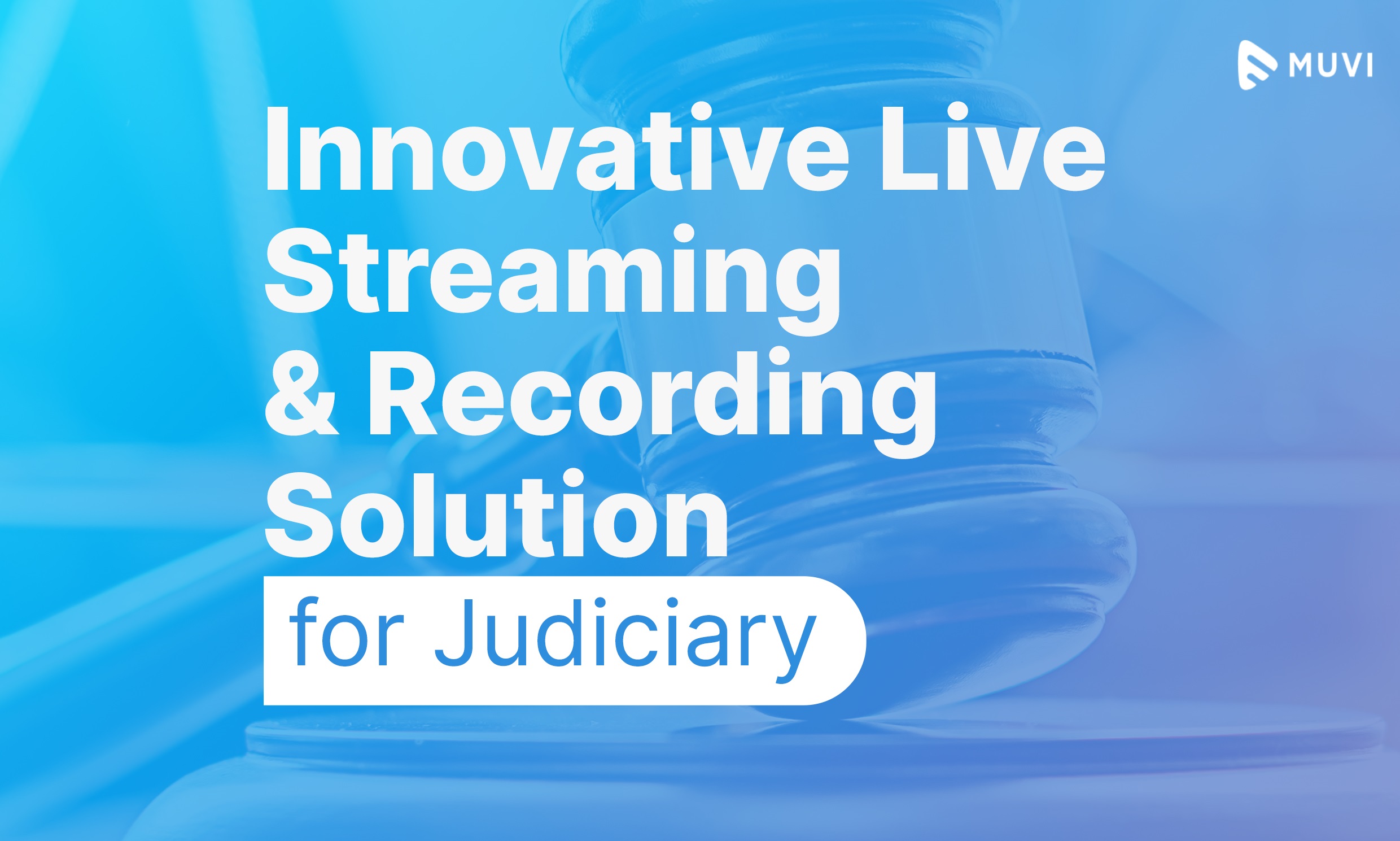

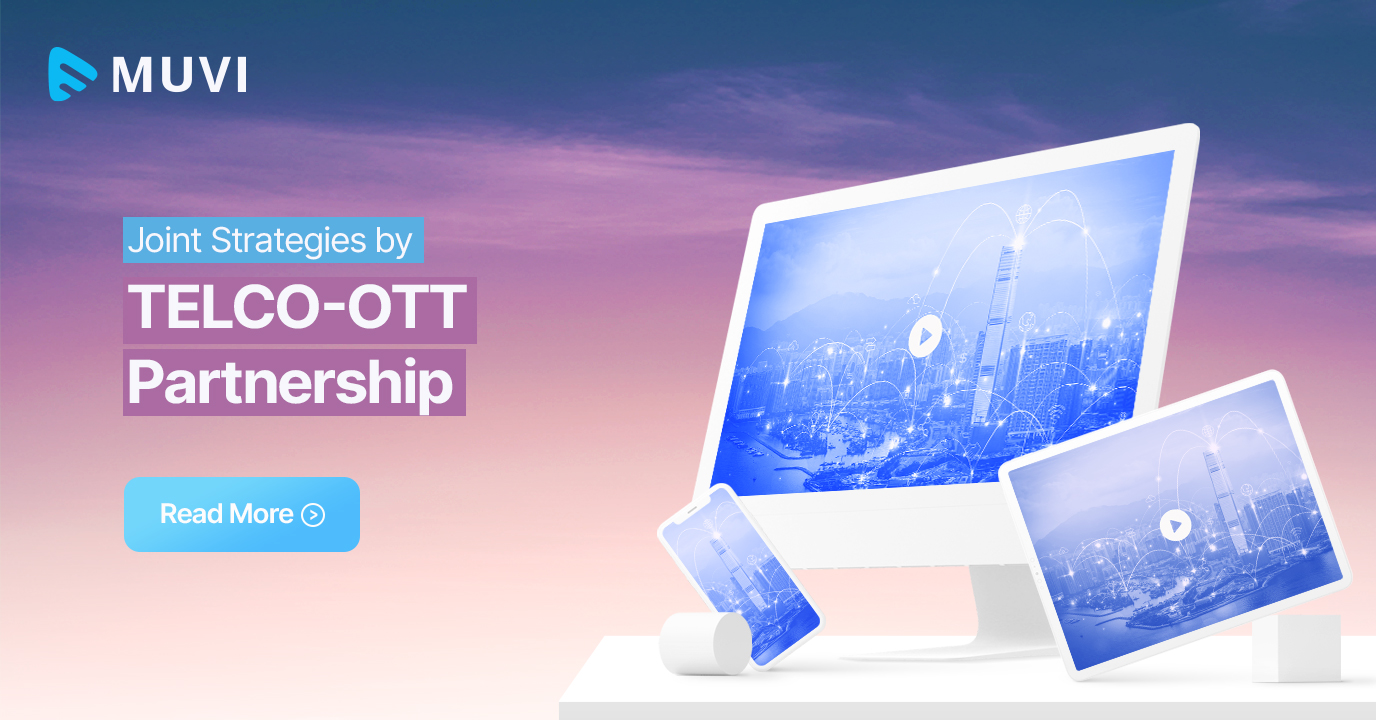
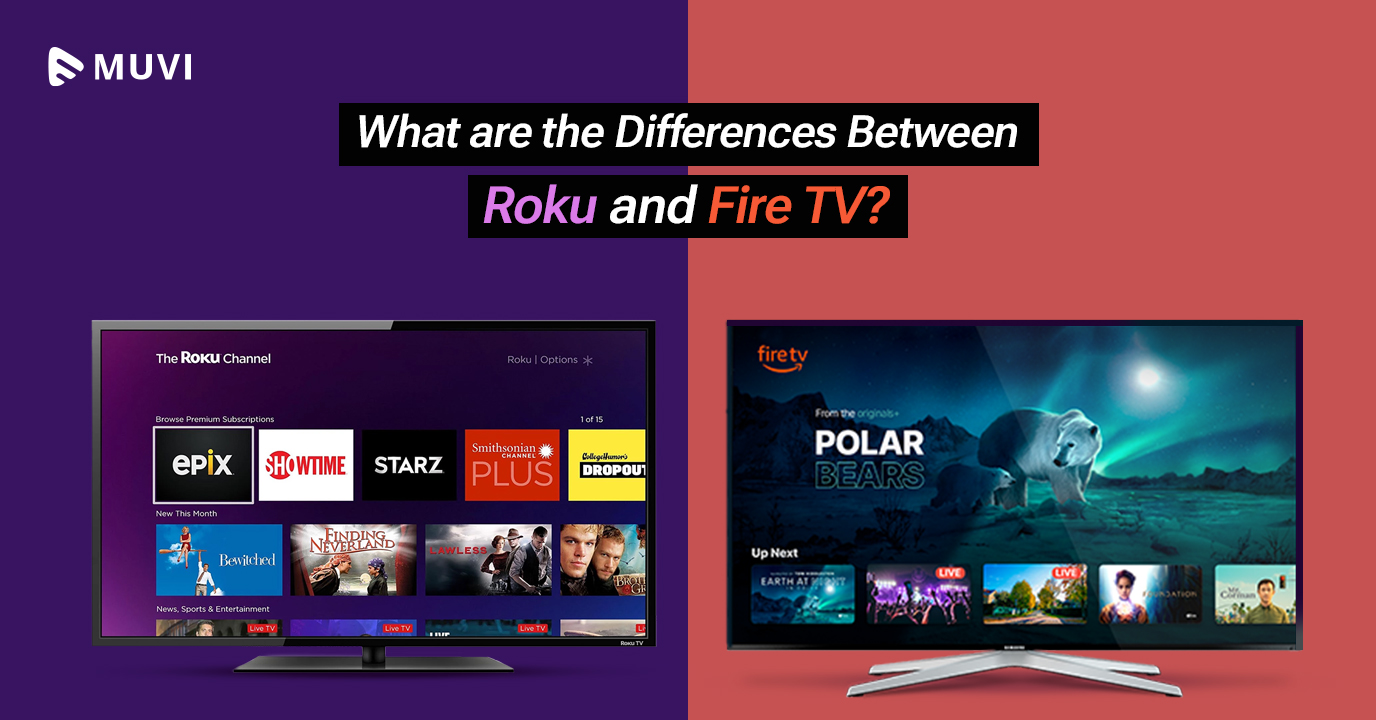
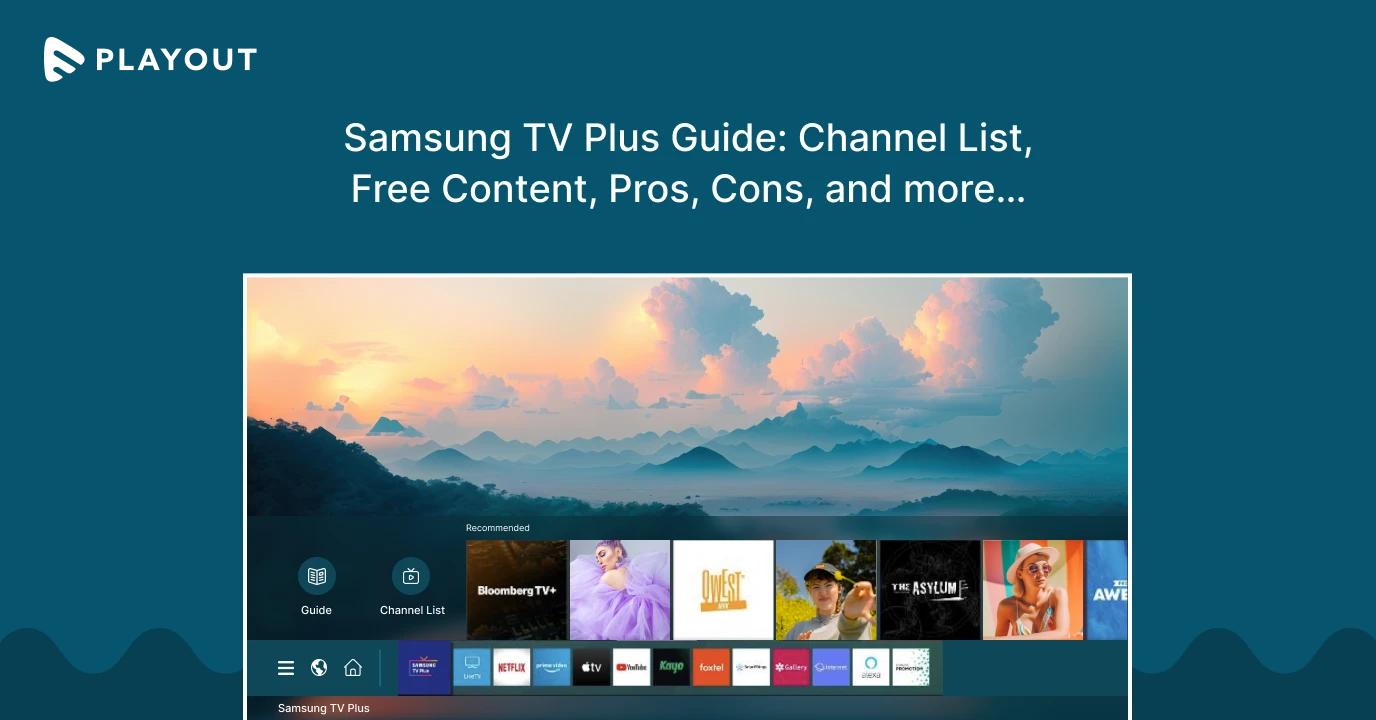
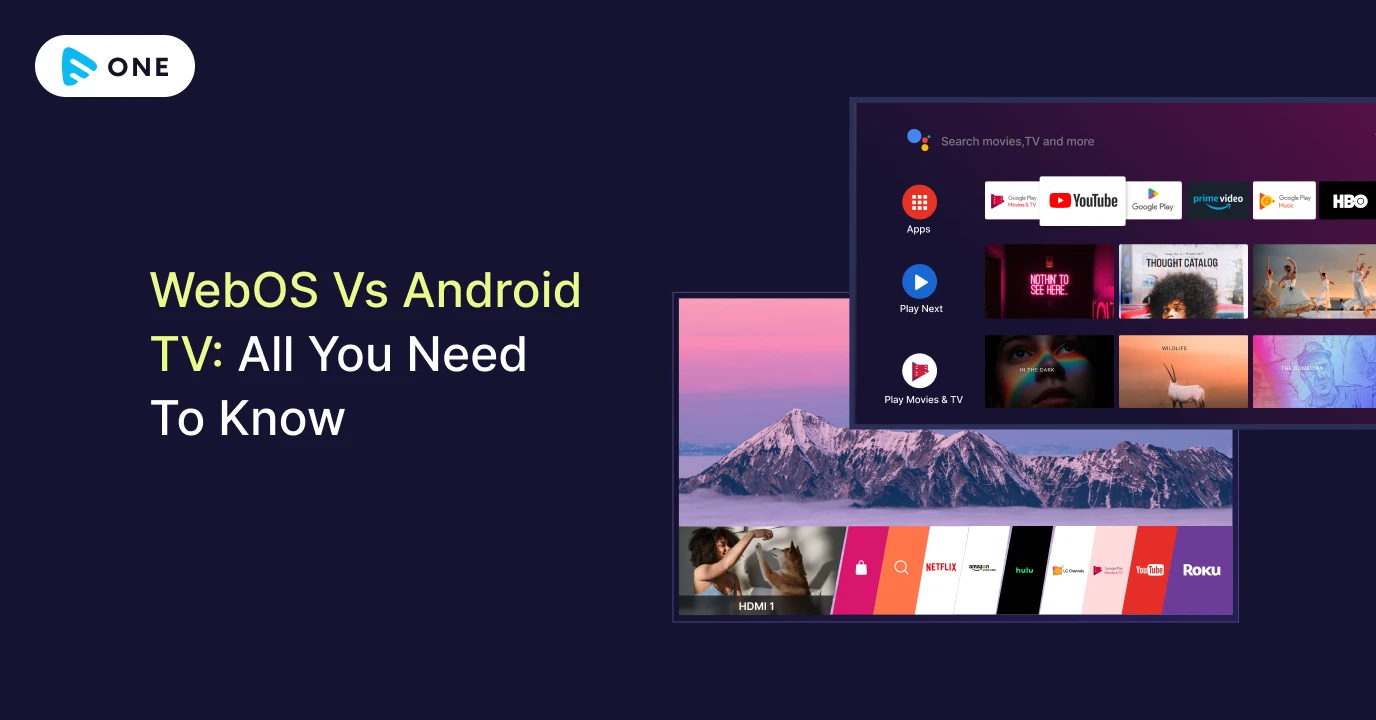



Add your comment